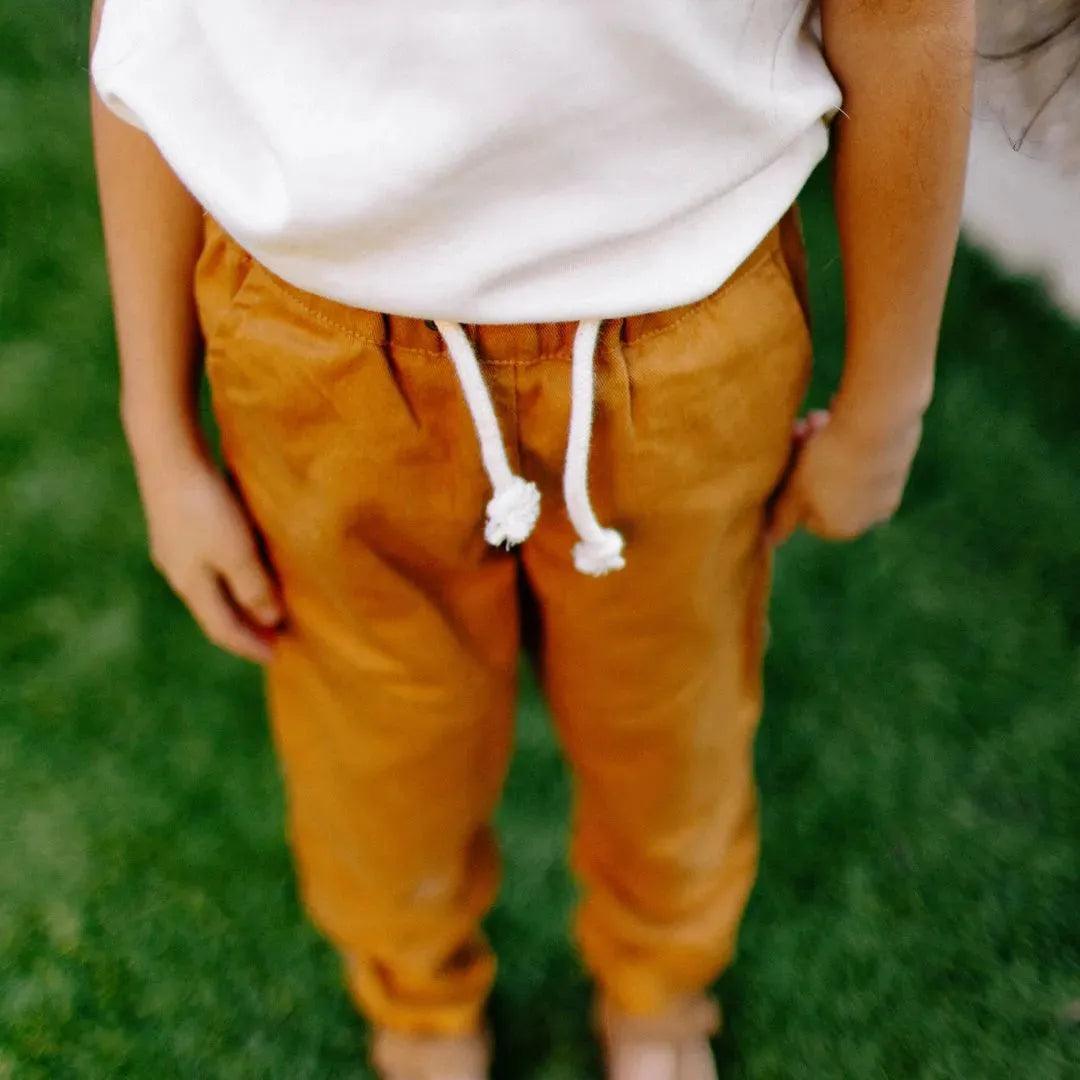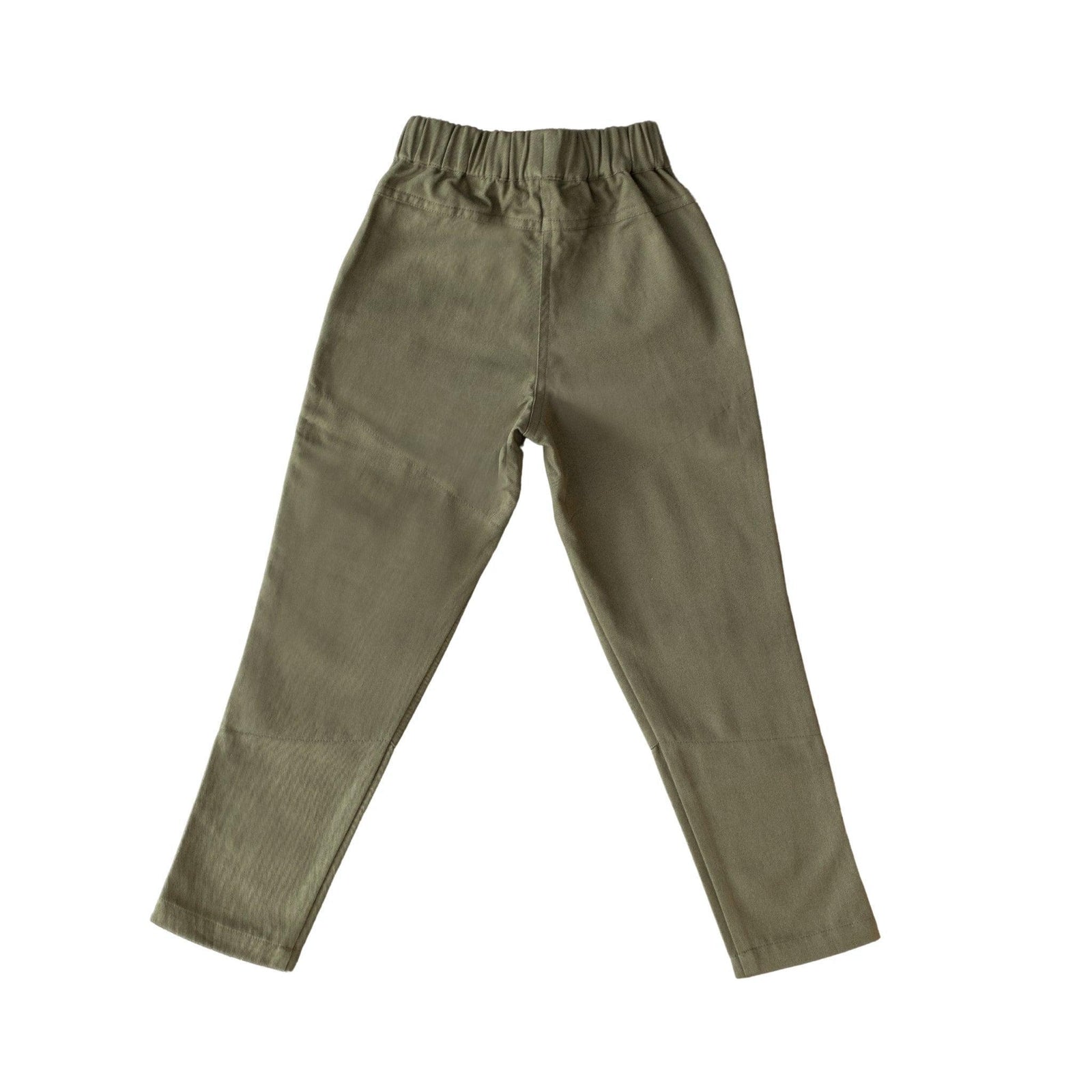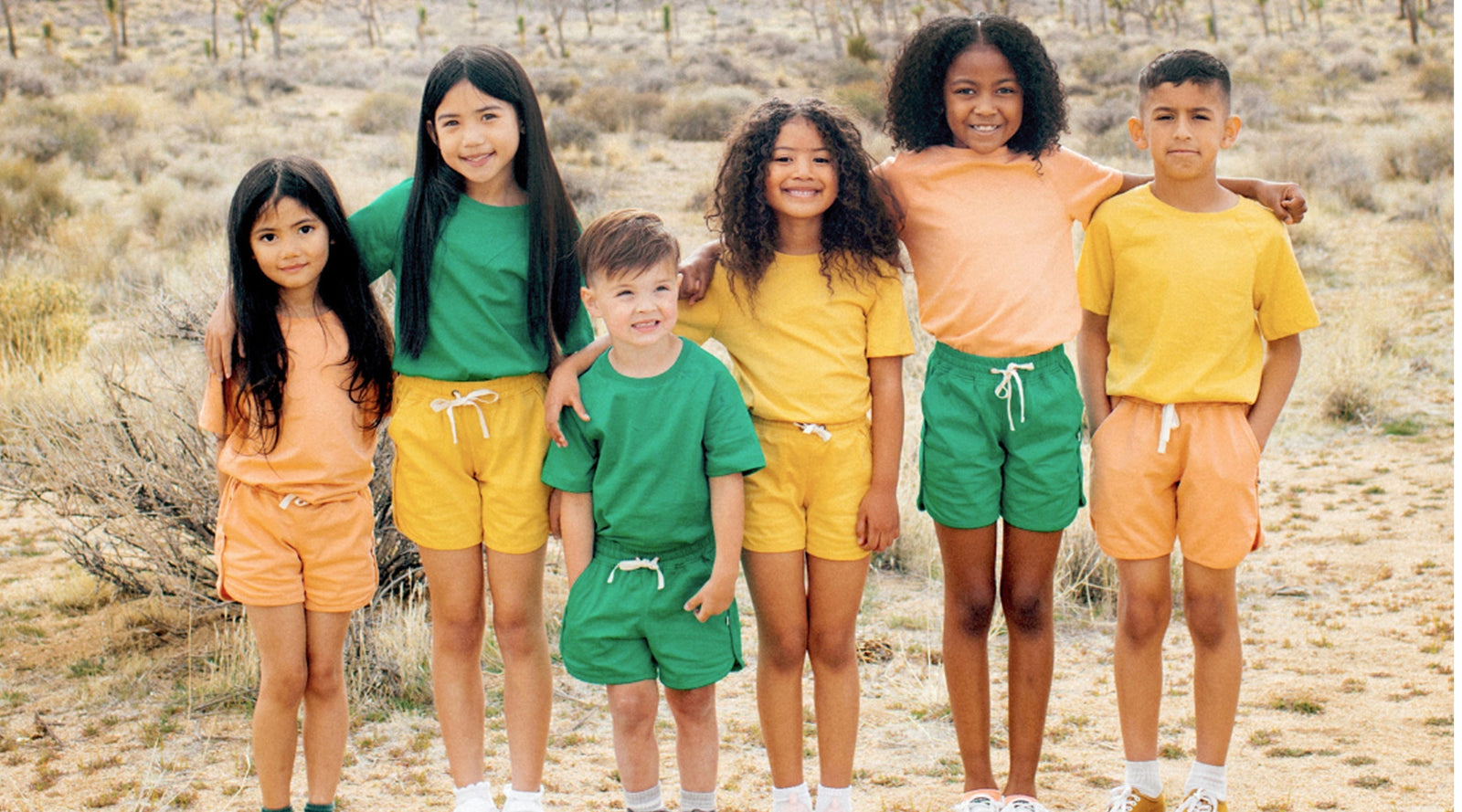FREE SHIPPING ON ALL US ORDERS OVER $150
FREE SHIPPING ON ALL US ORDERS OVER $150

What's Wrong with Dressing Kids in Plastic?
July 15, 2022 4 min read
You aren’t literally putting your kids in plastic-wrap, but it’s hard to avoid dressing kids in polyester or other plastic-based fibers. Find out why you might want to avoid plastic-based clothing for both the health of your kids and the environment. We’ll also help you find some sneaky plastic sources that you probably didn’t know (and that have an even worse health impact than you knew.) And because I never like to leave you without hope, I’ll give you some alternatives to plastic clothes.
If you are anything like me, you probably switched out your BPA-ladened water bottles long ago, and started using more stainless steel. Or if you have babies, you worried about putting expressed milk or formula in bottles with BPA and moved to glass bottles. As parents, we often think about health when it comes to what our kids obviously ingest.
But we all know that kids (especially little ones or sensory seekers) may suck on their clothes, or pick up something random and put it in their mouth— what if those clothes are made of the same plastic you’ve been so carefully avoiding? Or something worse? Or what if toys are covered in micro-plastic dust from that plastic in those clothes?
The sad reality is that both of those things are true, and it impacts the health of our kids.
What is Plastic Anyways?
Science break: what is plastic anyways? All plastics (naturally occurring or synthetic) are strings of repeating molecular units that are flexible—aka polymers. Some polymers are totally natural like amber or latex from rubber trees. But most often, when people are talking about plastics they are referring to polymers made from a petrochemical base (either oil or natural gas.) For the purpose of this article, we are focused on petrochemical-derived polymers.
Common Sources of Plastics in Clothes
We all know that polyester is plastic, but there are lots of other sources of plastic in clothing. Here are some common ones:
- Polyester
- Nylon/Polyamide
- Acetate
- PU (Polyurethane)
- Acrylic
- Microfiber
- Poly-cotton blend
- Tri-blend (polyester, cotton and nylon mixed)
- Spandex (not all spandex is plastic-based, there is emerging bio-based spandex.)
Why is plastic used so often in clothes?
Short answer: plastic is cheap and you can do a lot with it. The raw materials are inexpensive, and the process is highly mechanized so labor costs are reduced. Plastics can also incorporate a lot of features that people like in their clothes: like wicking (think workout gear), warmth (think fleece), water fastness, and stain resistance.
How is plastic turned into fabric?
You know when you use a glue-gun (that’s plastic!) and the end of the melted glue forms long filaments? Clothing manufacturing is much the same: melt plastic, form threads, weave or knit the threads into fabric.
Why are plastic clothes bad for kids?
There’s a lot that isn’t known about the impact of plastic on human health. But there are some things. First, let’s remember that just because something isn’t intended to be ingested, doesn’t mean it doesn’t get ingested. I’ve already mentioned kids chewing on clothes and the dust in our air that we all breathe.
Each week, we ingest about a credit card’s worth of micro and nanoplastic. Much of this plastic comes from our food containers, but fabric and the finishing chemicals applied to clothes are also contributors to this plastic consumption.
Are micro and nanoplastics actually that bad for us? Well, it looks like they could be:
These nanoparticles can migrate systemically to the lymph and circulatory systems, eventually reaching the brain, and the placenta in pregnant women. Once internalized, they may cause physical, chemical, and micro-biological toxicity. Results may include cellular damage, inflammatory and immune reactions, DNA damage, as well as neurotoxic and metabolic effects. (Sierra Club)
Additionally, 75% of clothing labeled stain- or water-resistant have forever chemicals in them. What are forever chemicals? The technical term for them is PFAS (per- and polyfluoroalkyl substances) and they are plastics applied to surfaces to make them non-stick (think teflon). In clothing, this means that stains and water don’t absorb into the fabrics.
But what do forever chemicals do? They are linked to high rates of cancer and may even increase the risk of infectious diseases. Clothes are unlikely to be the largest contributor to PFAS exposure, but like lead, we don’t know if there is a safe exposure level, so it is probably best to reduce exposure as much as possible.
Environmental Impacts of Plastic in Clothes
You’ve probably heard of this time and time again, but the environmental impact of plastics is high.
First, the petroleum used to produce them is a non-renewable resource, and the production of polyester clothing alone produces a lot of carbon emissions. In fact, in 2015 the emissions released from polyester production were about the same as the annual output of 185 coal-fired power plants. And polyester production continues to rise globally.
Second, over the course of the product’s lifetime, the fabric will break down into micro and nano particles that end up in our oceans and waterways. Causing pollution and entering our food chain.
What about recycled plastic in clothes?
Yes, it is always better to use recycled materials, and the environmental impact of this is less than producing virgin polyester. However, the health impacts remain, so it is still an area of concern.
How do you avoid harmful plastics in kids clothes?
I never want to leave you on a negative note, but there's TOO much for one blog post. So, read on to find out how to avoid these harmful plastics.
We think they'll love...
Meet the styles families love most. Our best-selling kids’ clothes are crafted from organic, sustainable fabrics and built to last through countless adventures—then passed on through our TradeUp program.
Get 15% off
Get 15% off your first order along with early access to new products and exclusive deals when you join our list!
Sign up to get the latest on sales, new releases and more …








































